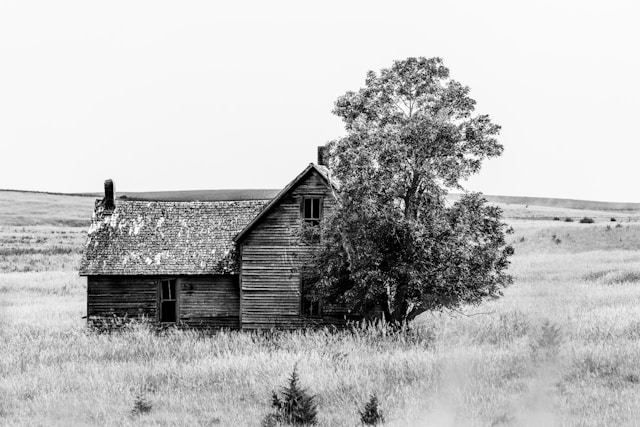If you believe the portrait of rural America depicted in the Netflix film Hillbilly Elegy, you might conclude that its residents are hopelessly impoverished, addicted, and depressed. That’s also the view of Eduardo Porter in “The Hard Truth of Trying to ‘Save’ Rural America,” whose much-discussed piece in The New York Times argues that the economic decline of rural America is so severe and irreversible that it may be better just to write it off and encourage its residents to move into nearby cities.
Yet as Mark Sappenfield writes in the Christian Science Monitor, a far better representative of rural America is Cassie Chambers Armstrong:
“Ms. Armstrong is the author of Hill Women, which chronicles the generations of strong, resourceful Appalachian women who helped her on her way to three Ivy League degrees. ‘The impression is that it is so broken that it can only be saved if outsiders swoop in to rescue it,’ she tells me. But Appalachia ‘has all the skills it needs to solve its own problems.’”
I met another incredible rural woman about six weeks ago in rural North Carolina. Judy Carpenter, an award-winning trap and field shooter, is now investing her life savings into creating a model sustainable agriculture destination called Lucky Clays Farm. She invited me to lead a workshop on “Healing the Urban-Rural Divide.” I suggested to a room full of socially distanced state and local economic developers that Stanly County, the rural locale we were in, should pursue a bunch of mutually beneficial projects with the fast-growing city of Charlotte, an hour’s drive west. Among them:
- Diversify the food-growing capacity of Stanly County, where land is plentiful, to ease food insecurity in Charlotte. Lucky Clays Farm itself is prototyping hydroponic and aquaponic growing methods with urban sales in mind.
- Upgrade the internet infrastructure in Stanly, so that entrepreneurs from Charlotte can take advantage of Stanly’s more affordable commercial rents to launch a range of innovative businesses serving regional needs.
- Create a rural tourist destination in Stanly where rat-race-weary Charlotte residents can catch a weekend break. Again, Lucky Clays Farm has anticipated this by building getaway homes and a Wellness Center and by developing a modest hotel and foodie restaurant.
- Deploy a regional online platform for financing these businesses and projects through investment crowdfunding.
These kinds of projects, I suggested, would not only increase regional prosperity but also much-needed social harmony and understanding. The Cook Political Report recently published a provocative piece entitled “Density as Destiny,” noting that Bloomberg/CityLab has performed a preliminary analysis of the November election and found a political tipping point at 700 people per square mile. Rural counties with fewer than 500 residents per square mile were reliably Republican, while urban counties with over 1,500 residents per square mile were reliably Democrat. Those in between, suburban and exurban counties, were purplish and up for grabs politically. Regional efforts to bring together urban and rural neighbors can thus begin to heal the gaping political wounds in our country.
Honestly, I’ve long been pretty skeptical of regionalism. Most regional bodies promote the worst kinds of economic development, like heavily subsidizing corporate attractions, and lack the democratic checks and balances that characterize local and county governments. But regional projects that involve localities working together on focused and transparent initiatives are more promising.
Not a few progressive urbanites think this is a fool’s errand. But they are ignoring clear signs of vitality in rural America. Internet connectivity is reaching more households and businesses. The average age of farmers is finally declining as more young people choose to become local-food farmers. Water quality is improving. Recent immigrants, unable to find affordable housing in cities, now diversify once all-white rural communities. According to the 2016 Census, rural households had higher rates of home ownership, more stable families, and lower rates of poverty than their urban counterparts. Little wonder that many rural counties (not all, of course) are experiencing a significant growth in population.
In preparing for my Lucky Clays talk, I read several books by North Carolina’s celebrated demographer, Michael L. Walden, a professor at North Carolina State University. His work documents the transformation of North Carolina from a mostly rural state to an increasingly urban one. In his 2008 book, North Carolina in the Connected Age, he ends a chapter on the state’s future with a series of questions:
“Will retail outlets become obsolete as online shopping becomes more sophisticated? Will shopping malls become ghost towns, and if so, could this change improve traffic congestion but decimate local governments’ property tax revenues? Will further breakthroughs in communications and virtualization turn the home into the workplace, thereby dramatically reducing commuting costs for millions of workers? Could improvements in online education replace lecture halls as the way millions of college students learn and thereby save the state government billions of dollars in spending to construct and maintain college buildings?”
Yes, yes, yes, and yes. But the driving force is not just technology, as Walden predicted, but COVID-19. The pandemic has fundamentally turned upside down the way we organize our buying behavior, our work lives, and our educational institutions. Don’t expect things to return to “normal” once vaccines are distributed. We have all learned lessons this past year about simplifying and improving our lives by staying at home more and deepening our roots in our communities. And these lessons, I would argue, will incentivize more of us to participate in urban-based businesses by living in rural settings.
Fifty years ago, rural communities were strictly defined by industries based on their natural resources—farms, fisheries, forestry, mining, and tourism. A few support services grew around the workers and companies in these industries, but if the big mining company or paper processor that anchored the industry shut down, usually the entire economy collapsed. These communities were fragile, undiversified, and impoverished. Even Jane Jacobs insisted in her Economy of Cities that these communities were little more than “supply regions” for cities.
Today, many of these same communities are experiencing a renaissance, as is apparent in Norwood, North Carolina, where Lucky Clays Farm is located. Rural regions now can provide early-stage entrepreneurs with low-cost housing, commercial space, and internet connectivity. They can offer a lower cost of living to retirees, who then bring their substantial pension, Social Security, and Medicare payments into the local economy. For urbanites who have had it with crime, failing schools, and dirty air, resettling in these communities is a chance to reset their lives. A growing number of us will embrace rural as places we love where we can reshape our professional and work lives to serve our quality of life.
None of this is meant to diminish the many challenges rural America faces. Compared to urban areas, for example, rural communities struggle for decent access to health care and in-person education. But the biggest challenge rural communities face, I would argue, is contempt and condescension from snooty urbanites. Whether you are a city mouse (as I am) or a country mouse, please consider reaching out to the other side of America. Our future as a nation depends on it.



3 Responses
Tom, thanks for your comment. Yours was one of several I received making the point that cultural divisions between urban and rural America may be more important than economic ones. Your point–that migration to rural areas will be limited until they become more culturally welcoming–is probably right. But what I see happening right now is that more diverse populations ARE moving into rural communities and bringing cultural change. This is especially true for immigrant communities who see opportunities to start farms or work in rural-based factories (like meat processing). This diversification process is, to be sure, happening more quickly in some areas than others, and the effects are sometimes unexpected (like immigrants in southern Texas counties embracing Donald Trump in the last election). Of course, similar resistance to newcomers has long occurred in cities and suburbs as well.
I 100% agree. My former neighbors moved from Arlington to Asheville several years ago for the very reasons you lay out here – they were close to retirement, are passionate hikers and bird watchers, and were sick of the rat race and traffic in the DC area.
They also were interviewed for an awesome article about their move, and about how to “retire before you retire” for a local magazine. They invested in a local pizza place and brewery that grew its own grain, milled it and used it for their pizzas. The place won a bunch of awards and they say they now have more friends in their 20’s than their 60’s!
Michael, as someone with a long history of rural residence (Iowa raised, lived in Vermont, Candler NC, and worked statewide in NC) I have a couple of issues to flag.
First, don’t underestimate the impact of cultural conservatism in rural white America, both real and perceived. As long as places like Stanly County are assumed to be homophobic, racist, religiously bigoted, xenophobic, their options for growth and sustainability are limited. As we grow toward a majority-minority population, and toss in 10% GLBT+, growing immigration, other diversity issues, the attractiveness of places like Stanly County will be restricted, as a place to visit, work, live, for others who do not fit the mold.
I think it would be fascinating for you to lead this discussion with the Stanly County folks or similar place. Are they committed to overcoming the perception that they are hostile to diversity in their communities? Are there strategies for accomplishing this? This is in the context of an economic development strategy. I believe there are lots of racial and ethnic minorities and gay folks who would recognize and appreciate the benefits of small town life if we were not worried about getting a cross burned on the lawn or kids ostracized in school.
Second, have you looked at rural/small town communities, predominantly in the South, that are mostly African American or possibly Latino? Is there a different set of issues they must confront? (Yes) In NC, check out Weldon, Kinston, Siler City (50% Latino) Farmville, or even mid-size cities like Albany Ga. Folks in these towns constantly expressed the concern that there were limited opportunities for their kids, culturally as well as economically. Often when the kids moved to the cities they found that their sub-standard education limited their opportunities
Thanks for another thought-provoking article.